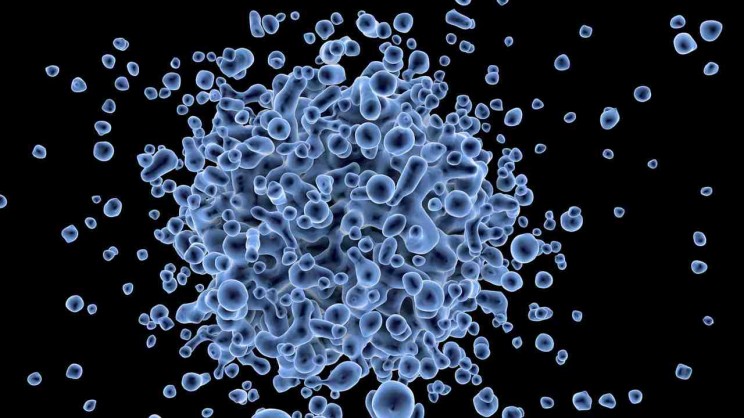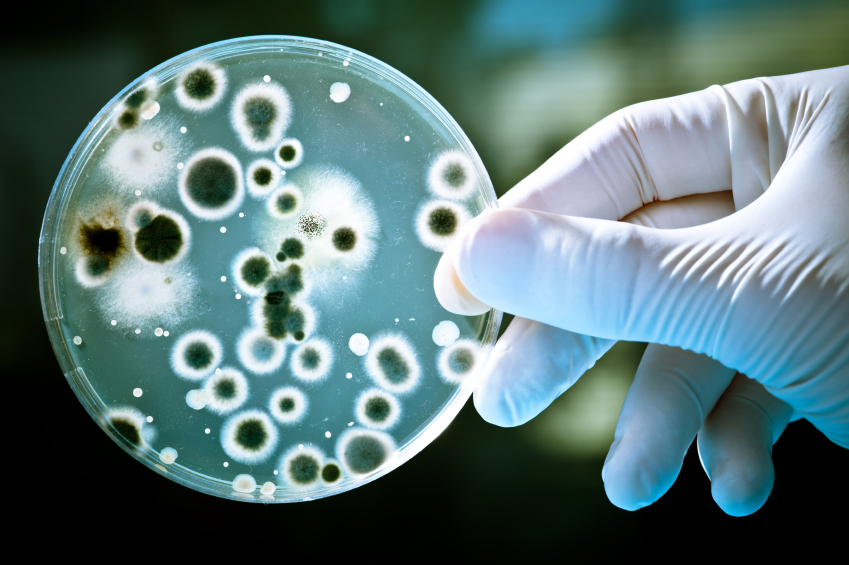By John Archibald
We humans have a love-hate relationship with bugs. I’m not talking about insects — although many of us cringe at the thought of them too — but rather the bugs we can’t see, the ones that make us sick.
Sure, microorganisms give us beer, wine, cheese, and yoghurt; hardly a day goes by without most people consuming food or drink produced by microbial fermentation. And we put microbes to good use in the laboratory, as vehicles for the production of insulin and other life-saving drugs, for example.
But microbes are also responsible for much of what ails us, from annoying stomach ‘bugs’ to deadly infectious diseases such as tuberculosis and plague. Bacteria and viruses are even linked to certain cancers. Bugs are bad; antibiotics and antivirals are good. We spend billions annually trying to rid ourselves of microorganisms, and if they were to all disappear, well, all the better, right?
This is, of course, nonsense. Even the most ardent germaphobe would take a deep breath and accept the fact that we could no more survive without microbes than we could without oxygen. No matter how clean we strive to be, there are 100 trillion bacterial cells living on and within our bodies, 10 times the number of human cells that comprise ‘us’. Hundreds of different bacterial species live within our intestines, hundreds more thrive in our mouths and on our skin. Add in the resident viruses, fungi, and small animals such as worms and mites, and the human body becomes a full-blown ecosystem, a microcosm of the world around us. And like any ecosystem, if thrown off-balance bad things can happen. For example, many of our ‘good’ bacteria help us metabolize food and fight off illness. But after a prolonged course of antibiotics such bacteria can be knocked flat, and normally benign species such as ‘Clostridium difficile’ can grow out of control and cause disease.

Given the complexity of our body jungle, some researchers go as far as to propose that there is no such thing as a ‘human being’. Each of us should instead be thought of as a human-microbe symbiosis, a complex biological relationship in which neither partner can survive without the other. As disturbing a notion as this may be, one thing is indisputable: we depend on our microbiome and it depends on us.
And there is an even more fundamental way in which the survival of Homo sapiens is intimately tied to the hidden microbial majority of life. Each and every one of our 10 trillion cells betrays its microbial ancestry in harboring mitochondria, tiny subcellular factories that use oxygen to convert our food into ATP, the energy currency of all living cells. Our mitochondria are, in essence, domesticated bacteria — oxygen-consuming bacteria that took up residence inside another bacterium more than a billion years ago and never left. We know this because mitochondria possess tiny remnants of bacterium-like DNA inside them, distinct from the DNA housed in the cell nucleus. Modern genetic investigations have revealed that mitochondria are a throwback to a time before complex animals, plants, or fungi had arisen, a time when life was exclusively microbial.
As we ponder the bacterial nature of our mitochondria, it is also instructive to consider where the oxygen they so depend on actually comes from. The answer is photosynthesis. Within the cells of plants and algae are the all-important chloroplasts, green-tinged, DNA-containing factories that absorb sunlight, fix carbon dioxide, and pump oxygen into the atmosphere by the truckload. Most of the oxygen we breathe comes from the photosynthetic activities of these plants and algae—and like mitochondria, chloroplasts are derived from bacteria by symbiosis. The genetic signature written within chloroplast DNA links them to the myriad of free-living cyanobacteria drifting in the world’s oceans. Photosynthesis and respiration are the biochemical yin and yang of life on Earth. The energy that flows through chloroplasts and mitochondria connects life in the furthest corners of the biosphere.
For all our biological sophistication and intelligence, one could argue that we humans are little more than the sum of the individual cells from which we are built. And as is the case for all other complex multicellular organisms, our existence is inexorably linked to the sea of microbes that share our physical space. It is a reality we come by honestly. As we struggle to tame and exploit the microbial world, we would do well to remember that symbiosis—the living together of distinct organisms—explains both what we are and how we got here.
John Archibald is Professor of Biochemistry and Molecular Biology at Dalhousie University and a Senior Fellow of the Canadian Institute for Advanced Research, Program in Integrated Microbial Biodiversity. He is an Associate Editor for Genome Biology & Evolution and an Editorial Board Member of various scientific journals, including Current Biology, Eukaryotic Cell, and BMC Biology. He is the author of One Plus One Equals One: Symbiosis and the Evolution of Complex Life.
Subscribe to the OUPblog via
email or
RSS.
Subscribe to only science and medicine articles on the OUPblog via
email or
RSS.
Image credit: Virus Microbiology. Public domain via Pixabay
The post Microbes matter appeared first on OUPblog.

By William Firshein
It is almost impossible to read a daily newspaper or listen to news reports from television and radio without hearing about an outbreak of an infectious disease. On 13 March 2014, the New York City Department of Health investigated a measles outbreak. Sixteen cases including nine pediatric cases were detected, probably caused by a failure to vaccinate the victims. On 12 February, an outbreak of a common microbial pathogen known as C.difficile occurred in several hospitals in Great Britain. This pathogen induces severe cases of gastrointestinal distress including diarrhea, fever, and stomach cramps. One of the main problems with a number of microbial pathogens like C.difficile is that they have become completely resistant to many known drugs.
How did this occur? Antibiotics, complex substances produced by certain types of microbes that destroy other microbes, were hailed as miracle drugs when the first one (penicillin) was discovered more than 70 years ago by Alexander Flemming. Although over 70 useful antibiotics have been discovered since penicillin, many can no longer be used because microbial pathogens have become resistant to them through evolution. In fact, over two million people in the United States become infected with antibiotic resistant pathogens every year, leading to 23,000 deaths according to the Centers for Disease Control and Prevention (CDC). New non-antibiotic drugs are always being sought to treat infectious diseases (mostly microbial because viral diseases are not susceptible to antibiotics). One such new discovery is a commonly used pain medication called Carprofen which inhibits antibiotic resistant pathogens. Thus, the “war against” infectious diseases remains an ongoing focus of medical research.
Of course there are many other pathogens (both microbial and viral) besides those mentioned above that assault us and our body defenses constantly. They include pneumonia, dysentery, tuberculosis, tetanus, diphtheria, scarlet fever, ulcers, typhoid, meningitis, plague, cholera (bacterial), polio, HIV (AIDS), rabies, influenza, measles, mumps, the common cold, yellow fever, and chicken pox (viral). Nevertheless, all of us are not equally “susceptible” to each infectious disease — a poorly understood term that determines why some of us get one disease but not another, or why some diseases occur in the winter while others occur in the summer.
This brings us to an important concept, namely, that there is no way to be free of microbes that inhabit every “nook and cranny” of our bodies. Of the approximately ten million cells that make up the human body, there are billions of microbes that come along with them. Most microbes that inhabit our bodies are necessary for our existence. Together they make up what is called the “microbiome” consisting of a diverse group of microbes that help keep each of us healthy. Most of them are found in the gastrointestinal tract where they aid digestion; synthesize vitamins and other necessary biochemicals our cells cannot make; attack and destroy pathogens; and stimulate our immune system to act in the same way.

Nevertheless, with this constant assault, one might wonder how it is possible we have survived for so long. There are a number of other variables besides the “microbiome’ that are responsible and that are still poorly understood. These include an ability of a host (us) to coexist with a pathogen (we keep them at bay or limit their spread internally like tuberculosis), an ability to mount a furious immunological attack on the pathogen to destroy them, or an innate ability to remain “healthy” (a vague term that really signifies the fact that all of our metabolic systems are operating optimally most of the time like digestion, excretion, blood circulation, neurological or brain function, and healthy gums and teeth among other systems).
Where does this innate ability come from? Simply put, genetic phenomena (both in microbes and in humans). These traits are not only inherited under the control of genes but their functions are also controlled by such genes. Different pathogens have different sets of genes which act to produce a specific disease in a susceptible host. However, it is also why individual hosts (humans) are more or less resistant to such infectious diseases.
How does the body interact with these “foreign” entities? The immune system must protect the body from attack by pathogens and also from the formation of abnormal cells which could turn cancerous. Two types of immune responses exist. One is under the control of antibodies (proteins which circulate in the blood stream) that resist and inactivate invading pathogens by binding to them. The other is mediated by a certain type of white blood cell called a lymphocyte that destroys abnormal (potentially cancerous) cells and viral infected cells. Together, with other white blood cells, they present a formidable defense against infection and abnormality.
It takes time for an immune response by antibodies to develop during a pathogenic invasion because there are many components involved in the activity. They are usually divided into primary and secondary responses. The primary response represents the first contact with the antigen which after a period of time results in an increased production of specific antibodies that react only to that antigen (which by the way are also produced by certain lymphocytes called “B” or plasma cells). Once the infection is controlled, antibody levels fall considerably. If, however, another infection occurs in the future by the same pathogen, a much more vigorous response will result (called the secondary response) producing a much faster development and a higher level of antibodies. Why is the secondary response so much faster and vigorous? This phenomenon is due to a remarkable property of the immune system in which the primary response is “remembered” after its decrease by the preservation of “memory” “B” lymphocytes that circulate until the secondary response occurs, no matter how long it takes.
William Firshein is the Daniel Ayers Professor of Biology, Emeritus and author of The Infectious Microbe. He chaired the Biology Department at Wesleyan University for six years and published over 75 original research papers in the field of Molecular Microbiology of Pathogens. He was the recipient of several million dollars of grant support from various public and private research agencies and taught over 6,000 graduate and undergraduate students during his 48 year career.
Subscribe to the OUPblog via email or RSS.
Subscribe to only science and medicine articles on the OUPblog via email or RSS.
The post The never-ending assault by microbes appeared first on OUPblog.





